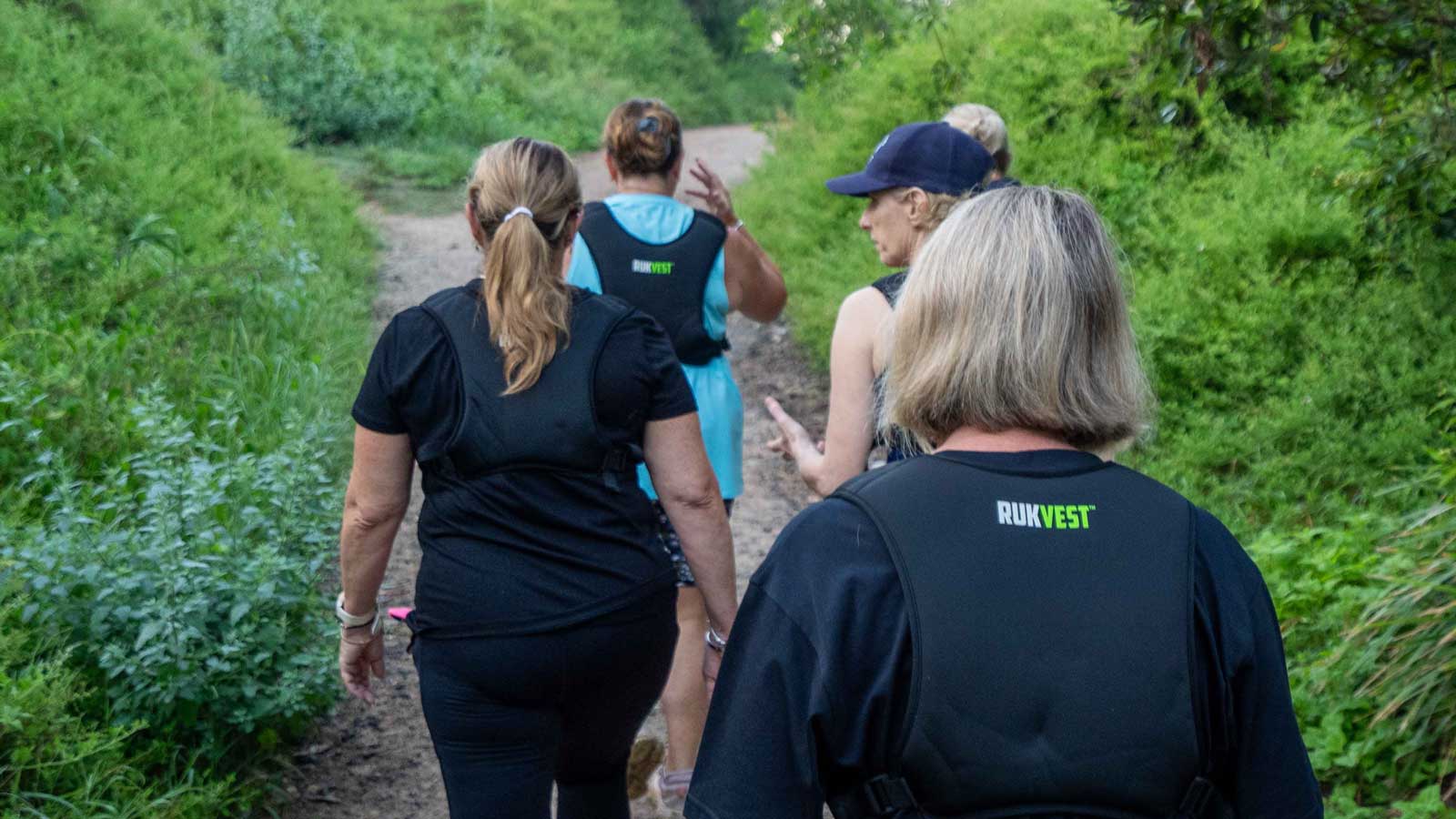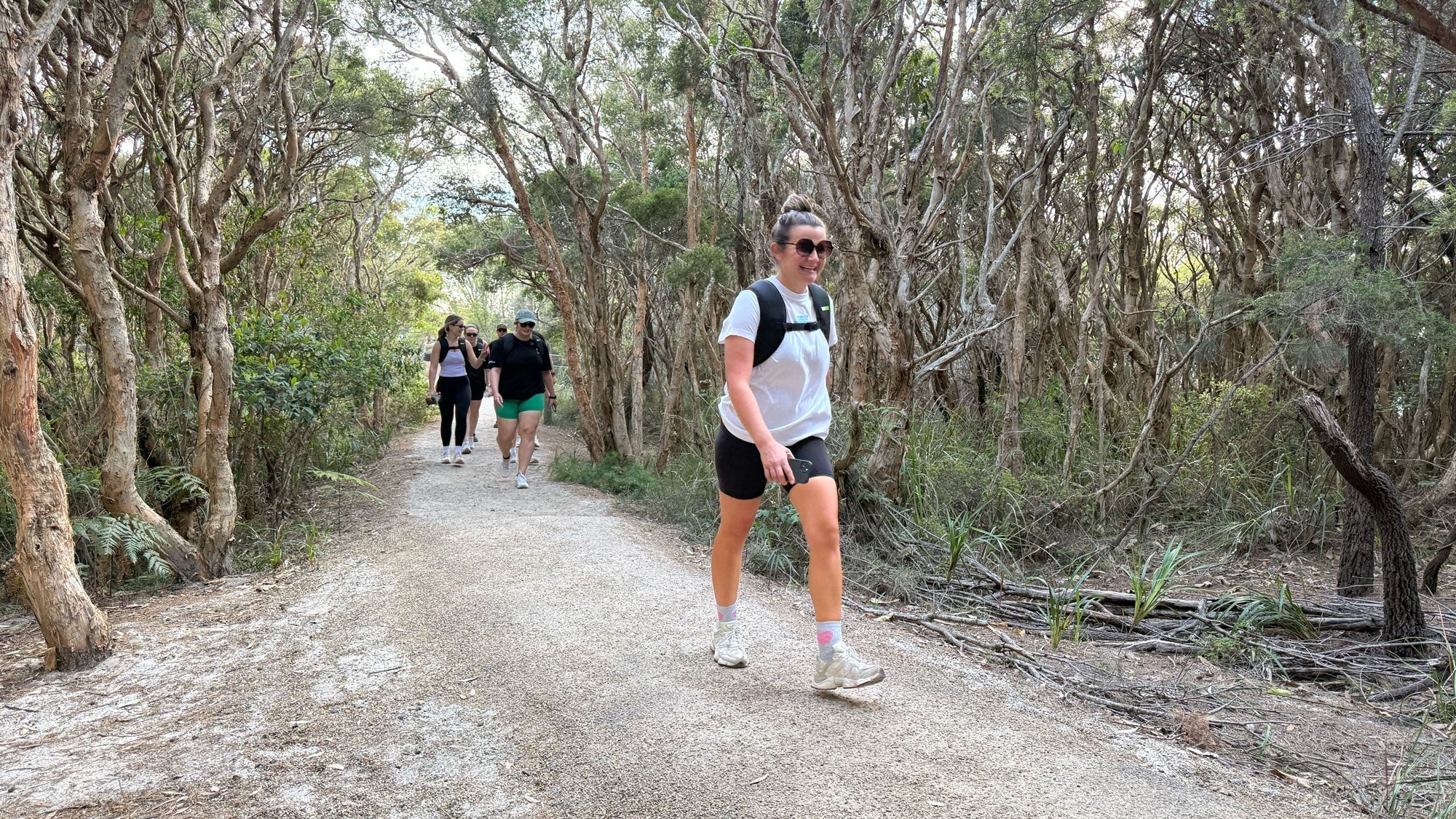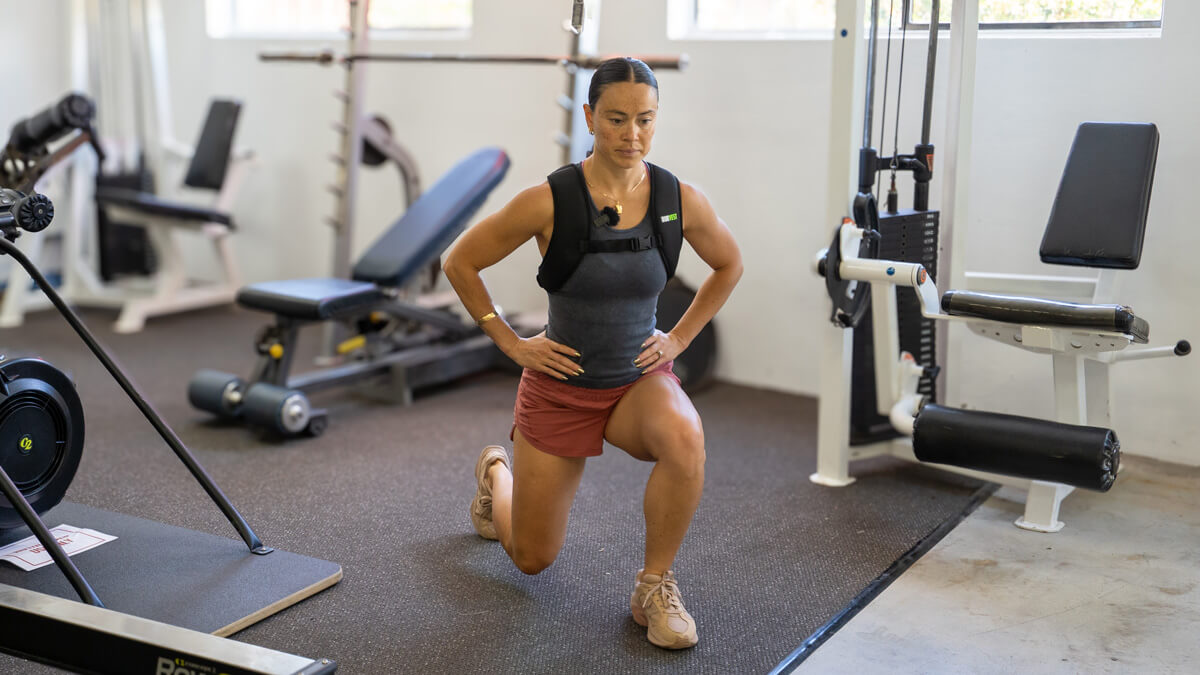Key Takeaways
- Bone loss accelerates during perimenopause, making it the priority window to start bone-loading exercise.
- Falling oestrogen speeds up bone density decline; consistent weight-bearing load helps counter it.
- Postmenopause focus shifts to maintaining density and reducing fracture risk.
- Weighted walking/vest training is effective when done regularly and progressed gently.
- Comfort drives adherence – RUKVEST’s gel design supports long-term, bounce-free use.
The Window You Didn't Know You Had
You're 48. Your periods are getting irregular. You're having hot flashes. Your GP mentions perimenopause and suddenly bone health is on the radar.
But here's what most Australian women don't realise: The next 5 years are the most critical for your bones.
Perimenopause and postmenopause sound like the same thing. They're not. And the timing of when you start protecting your bones changes everything about your long-term health.
The steepest bone loss in a woman's life happens during perimenopause and the first 5-8 years after menopause. If you wait until you're postmenopausal to start mechanical loading, you've already lost 10-15% of your bone density. That's not something you can easily get back.
Understanding the Timeline: Perimenopause vs Postmenopause
Let's start with definitions, because the medical terminology gets confusing.
Perimenopause: The transition phase before menopause
- Lasts 4-10 years (average 7 years)
- Your periods become irregular but haven't stopped completely
- Hormone levels (estrogen and progesterone) fluctuate wildly
- You might have hot flashes, night sweats, mood changes, sleep disruption
- Bone loss begins during this phase - typically 1-2% per year
Postmenopause: The phase after your final period
- Defined as 12 consecutive months without a period
- Your hormone levels stabilize (at a much lower level)
- Hot flashes usually decrease after 5-8 years
- Bone loss continues but at a slower rate - typically 0.5-1% per year after the first 5-8 years
The critical insight: Your bones lose density fastest during perimenopause and the first 5-8 years of postmenopause. After that, the rate of loss slows significantly.
Why Timing Matters: The Estrogen Story
Here's the bone biology that most Australian GPs explain but most women don't fully understand.
Estrogen does two things for your bones:
- It tells your bone cells to build new bone tissue
- It slows down bone resorption (the breakdown of old bone)
When estrogen levels are high and stable, your bones stay strong. You build bone until about age 30, then you maintain it. Life is good.
But during perimenopause, your estrogen levels don't just drop - they fluctuate. One month they're high. The next month they're low. Your bones don't know what's happening. Your bone cells get confused. They stop building and start breaking down faster.
This is why bone loss accelerates during perimenopause. It's not just that estrogen is lower - it's that it's unpredictable.
Then menopause happens (your final period). Your estrogen drops to a stable low level. Your bones adjust to this new normal. The wild fluctuations stop. But the damage is already done - you've lost significant bone density during those unstable years.
After the first 5-8 years of postmenopause, your bone loss rate slows because your body has adapted to the low estrogen level. You're not losing bone as fast anymore.
The Numbers: How Much Bone Do You Actually Lose?
According to Healthy Bones Australia and the Australasian Menopause Society, here's what happens:
Perimenopause (7 years average):
- Bone loss: 1-2% per year
- Total loss over 7 years: 7-14%
Early postmenopause (first 5-8 years):
- Bone loss: 2-3% per year
- Total loss over 5 years: 10-15%
Late postmenopause (after 8+ years):
- Bone loss: 0.5-1% per year
- Total loss per 5 years: 2.5-5%
This is why the window matters. If you do nothing during perimenopause and early postmenopause, you could lose 17-29% of your bone density in just 12 years. That's the difference between normal bone density and osteopenia. Or between osteopenia and osteoporosis.
But if you start mechanical loading during perimenopause, you can slow that loss significantly.
Where Weighted Vests Fit: Mechanical Loading During the Critical Window
When incorporated with exercise and movement, a weighted vest creates mechanical loading - the force of weight on your bones. This sends a signal to your bone cells: "Build stronger bone. You need it."
Your bones respond by increasing bone formation, even when estrogen is low or fluctuating.
Here's the research: Studies from Exercise & Sports Science Australia show that mechanical loading during perimenopause and early postmenopause can reduce bone loss by 1-3% per year. That might not sound like much, but over 10 years, that's the difference between losing 15% of your bone density and losing 5%.
The timing advantage of starting during perimenopause:
If you start a weighted vest at age 48 (perimenopause):
- Years 1-7 (perimenopause): You slow bone loss from 1-2% to 0.5-1% annually
- Years 8-15 (early postmenopause): You slow bone loss from 2-3% to 1-1.5% annually
- By age 55: You've preserved significantly more bone density than if you'd done nothing
If you wait until age 55 (postmenopause) to start:
- You've already lost 17-29% of your bone density
- You can slow further loss, but you can't recover what's already gone
- Your baseline is lower, so your fracture risk is higher

The Comfort Factor During the Critical Window
Here's the practical reality: You're more likely to stick with a weighted vest during perimenopause and early postmenopause if it's comfortable.
Why? Because you're not in crisis mode. You don't have an osteoporosis diagnosis. You're doing this as prevention.
Most women will quit an uncomfortable vest within a few weeks. But if you're wearing a vest that doesn't bounce, doesn't dig in, and molds to your body? You'll wear it for months and years. That consistency is what actually builds bone resilience.
RUKVEST's weighted gel technology is designed for this. It distributes weight evenly front-to-back, sits snug in high-quality lycra, and doesn't shift as you move. For women in perimenopause or early postmenopause who are thinking long-term about bone health, this matters.
What Your Doctor Wants You to Do
If you're in perimenopause or early postmenopause, your GP will recommend:
- Adequate calcium (1,300 mg daily for women over 50)
- Vitamin D (monitored by your doctor - most Australian women are deficient)
- Weight-bearing exercise and resistance training
- Lifestyle factors: Don't smoke, limit alcohol, stay active
A weighted vest hits items 3 and 4. It's weight-bearing. It's resistance training. And you can wear it while you do other activities - while walking, while working from home, while doing household tasks.
The Australasian Menopause Society's position is clear: The goal during perimenopause is to "maintain bone density and prepare for postmenopause." A weighted vest is exactly that strategy.
The Honest Truth About the Window
You can't stop perimenopause or menopause. You can't prevent bone loss entirely.
But you can slow it dramatically if you act during the critical window - perimenopause and the first 5-8 years of postmenopause.
The women who start mechanical loading during perimenopause and maintain it through early postmenopause typically have 15-25% better bone density at age 65 than women who do nothing.
That's not just a number on a scan. That's the difference between fracturing your hip from a fall and walking away unharmed.
Your Next Step
If you're in perimenopause or early postmenopause, ask your GP: "What can I do now to protect my bones for the next 20 years?"
Most will say: calcium, vitamin D, exercise, and a weighted vest if you'll actually wear it consistently.
Then find a vest that's comfortable enough to wear daily. Because the best time to start was yesterday. The second best time is today.








What's the difference between perimenopause and postmenopause?
Perimenopause is the transition phase before menopause, lasting 4-10 years on average. During this time, your periods become irregular, hormone levels fluctuate wildly, and you may experience hot flashes, night sweats, and mood changes. Bone loss during perimenopause typically occurs at 1-2% per year. Postmenopause begins 12 months after your final period. Your hormone levels stabilize at a lower level, and bone loss slows to 0.5-1% per year after the first 5-8 years. The critical difference: perimenopause has unstable hormone fluctuations that accelerate bone loss, while postmenopause has stable (but low) hormone levels.
How much bone do women lose during perimenopause?
According to Healthy Bones Australia and the Australasian Menopause Society, women typically lose 1-2% of bone density per year during perimenopause, which lasts an average of 7 years. This means total bone loss during perimenopause can range from 7-14%. When combined with early postmenopause (the first 5-8 years after your final period, when bone loss accelerates to 2-3% annually), total bone loss can reach 17-29% over 12 years. This is why early intervention matters - waiting until postmenopause to start bone protection means you've already lost significant bone density that's difficult to recover.
When should I start wearing a weighted vest?
The best time to start is during perimenopause, before you've lost significant bone density. Research from Exercise & Sports Science Australia shows that mechanical loading during perimenopause can reduce bone loss from 1-2% annually to 0.5-1% annually. If you start at age 48 (perimenopause) versus age 55 (postmenopause), you can preserve 10-15% more bone density by age 65. However, it's never too late to start - even if you're already postmenopausal, a weighted vest will slow further bone loss. The key is consistency: you need to wear it regularly for it to be effective. Ask your GP if a weighted vest is appropriate for your situation.
Share:
How to Get the Most Out of Your Weighted Vest Workouts
Osteopenia vs Osteoporosis: Why Your Weighted Vest Strategy Changes